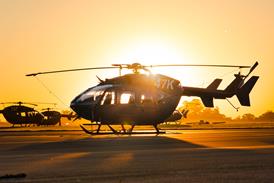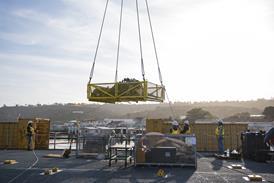David Learmount/LONDON
A British Airways Aerospatiale/British Aerospace Concorde elevon which sustained damage during supersonic flight has been sent to the UK Defence Evaluation and Research Agency (DERA) for a strip-down and detailed inspection. BAe has been given an undamaged elevon for extensive non-destructive testing.
BA says that examination of its seven Concordes immediately after the 25 May incident revealed no problems, so services continued. The airline cannot yet say, however, whether there need to be changes to the already comprehensive routine recurrent checks. The DERA/BAe tests should determine whether change is needed.
The incident occurred when the aircraft, about 1h from London Heathrow bound for New York with 53 passengers and nine crew, was in cruise climb at Mach 1.7 passing 41,000ft (12,500m) west of Ireland. A 0.6 x 1.2m triangular section from the trailing edge of one of the six elevons broke away, causing vibration. The captain made a precautionary turn back but did not declare an emergency. He reported no control problems and landed normally at Heathrow.
One of the flightcrew carried out a visual inspection from the cabin windows and determined that one elevon section was moving slightly more than the others during control inputs, because of the lower load on the actuators. Concorde uses elevons to control both roll and pitch, and does not have flaps. Structurally, there are 12 elevon sections grouped in six pairs. Each pair is powered by common actuators, but the structural separation is designed to prevent the propagation of a fault.
Source: Flight International























